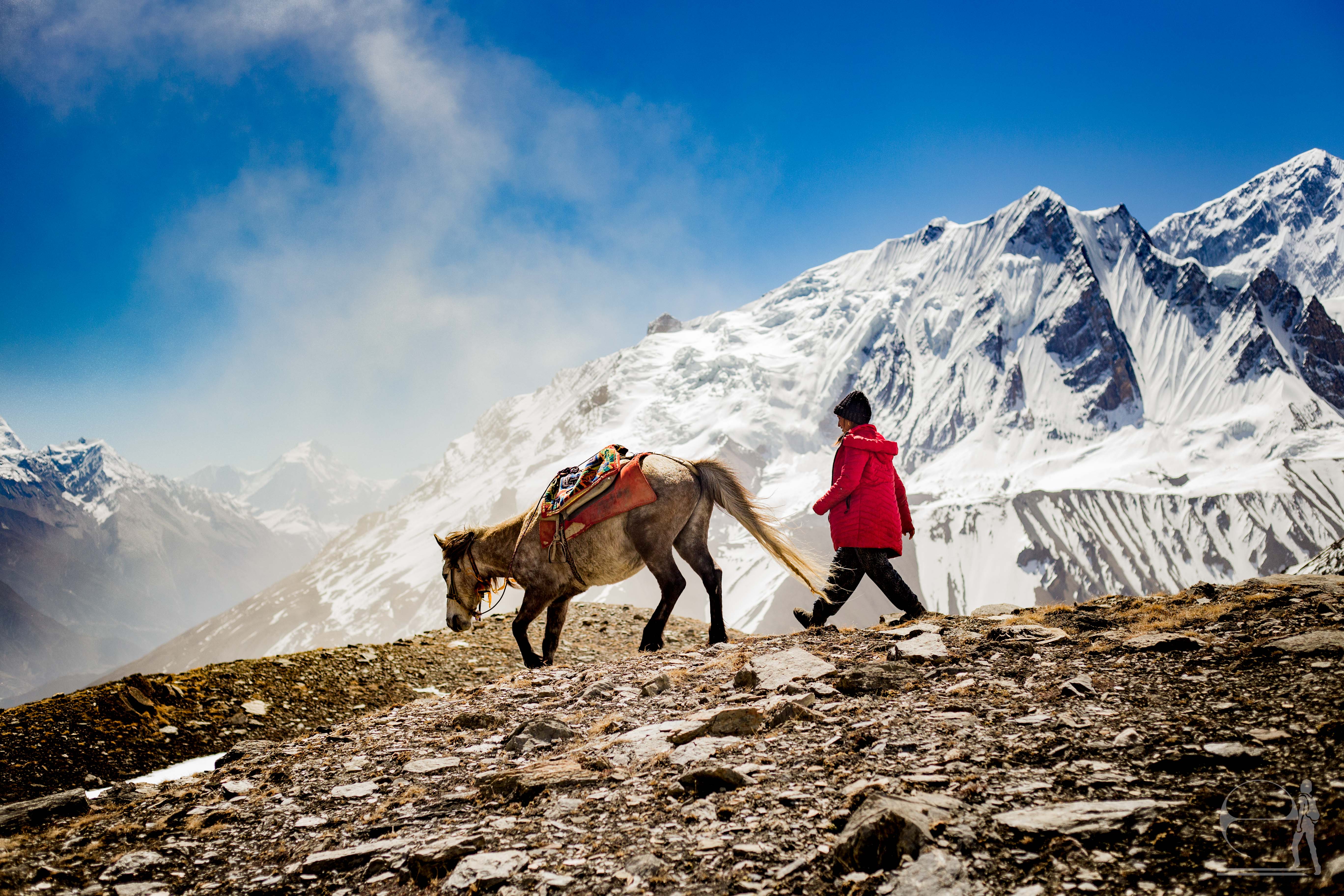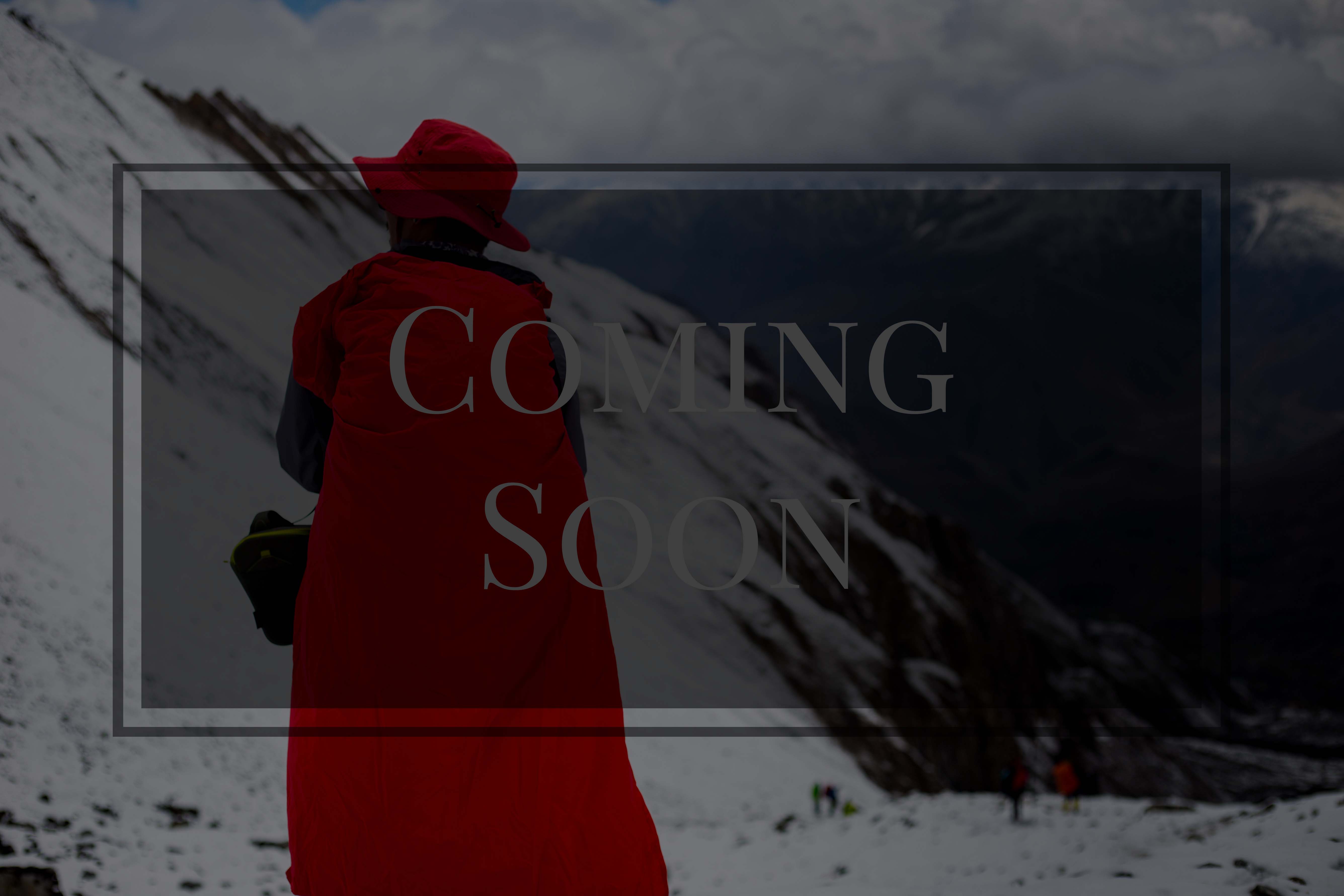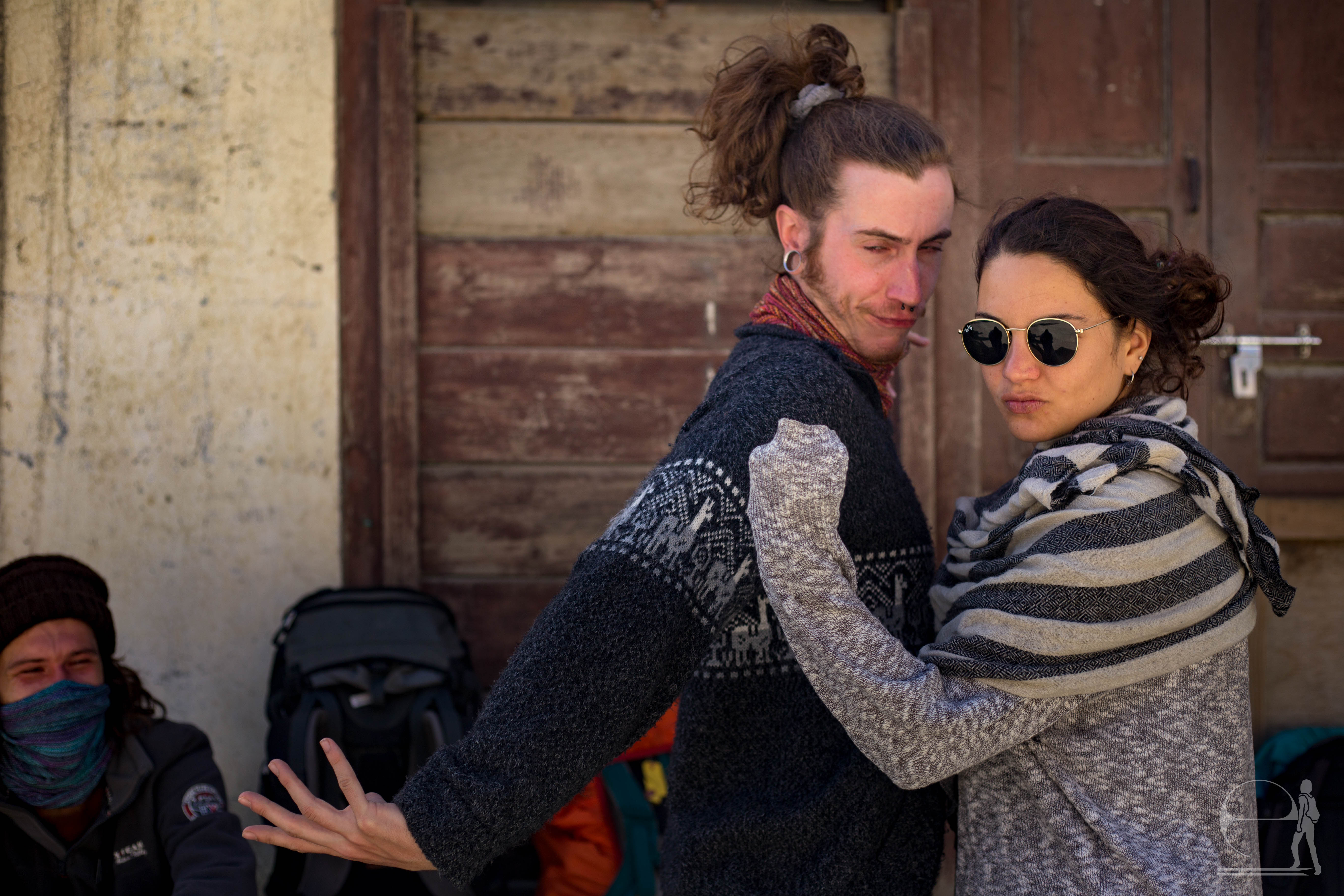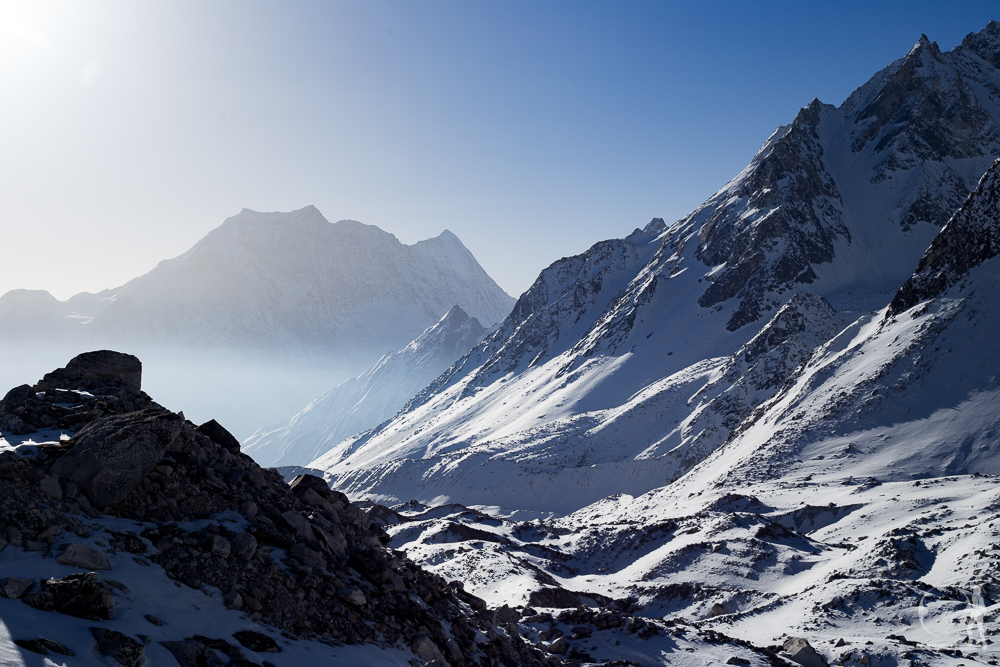/ What’s in my bag?
Sleep system

My sleep system consists of a 10C (50F) sleeping bag and silk-cotton blend sleeping bag liner. If you are doing a teahouse trek, you will be provided with a pillow and can ask for a blanket.
Sleeping bag
I opted for a lighter sleeping bag which is not as warm because you will receive warm blankets (usually for free, sometimes for a small 300 Nepalese Rupee fee) at every guesthouse. Between my sleeping bag and the blankets, I was very toasty every night.
However, I sleep warm. If you know you are a cold sleeper, you might need something a bit heavier. OR, to keep your weight low, consider either sleeping in your jacket or filling your water bottle with hot water and keep it under your blanket.
I primarily used my sleeping bag on the Manaslu and Tsum Valley trek. Much of the accommodation there had holes in the walls and the draft made the “inside” temperature about as toasty as the snowy outside. I did use my sleeping bag at High Camp on the Annapurna Circuit, when we were hit by a snowstorm. For my two treks at lower elevations (Ghorepani/Poon Hill and Mardi Himal), I did not bring my sleeping bag.
But if you can just ask for an extra blanket, why should you carry a sleeping bag? Well, during peak trekking season, asking for an extra blanket might mean a guide or porter has to go without a blanket. Often porters won’t carry their own sleeping bags since they’re already carrying so much weight.
Sleeping bag liner
This is a bit of luxury. Sleeping bag liners keep your sleeping bags clean, but as I mentioned above, you won’t necessarily be using your bag a lot on the trail. However, liners can also double as clean sheets, which can be nice after a long day on the trail.




